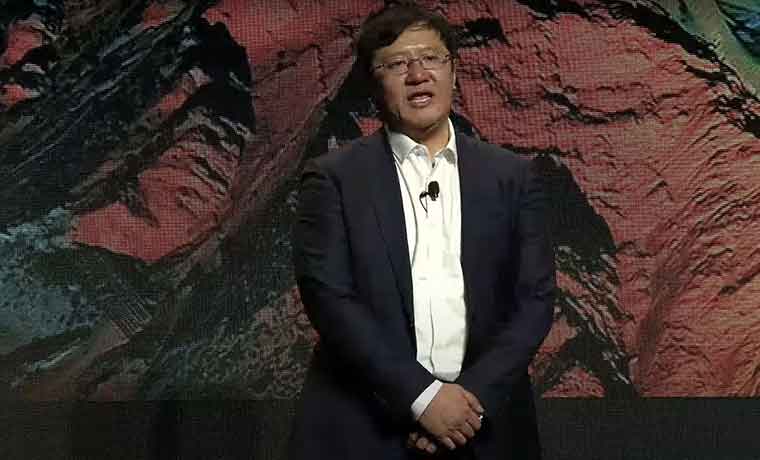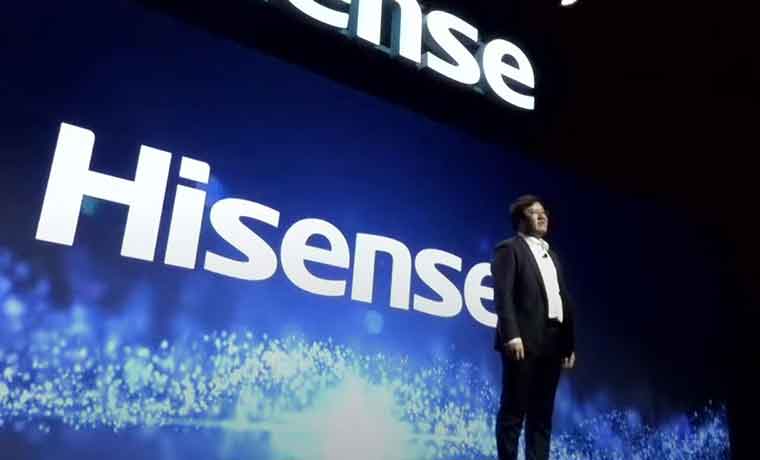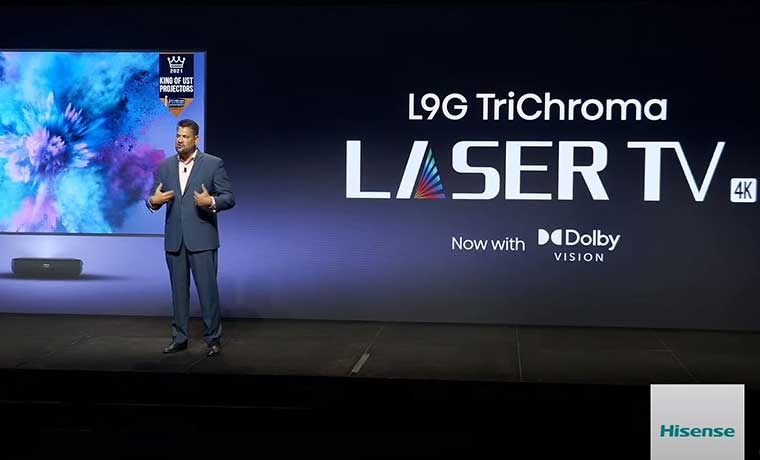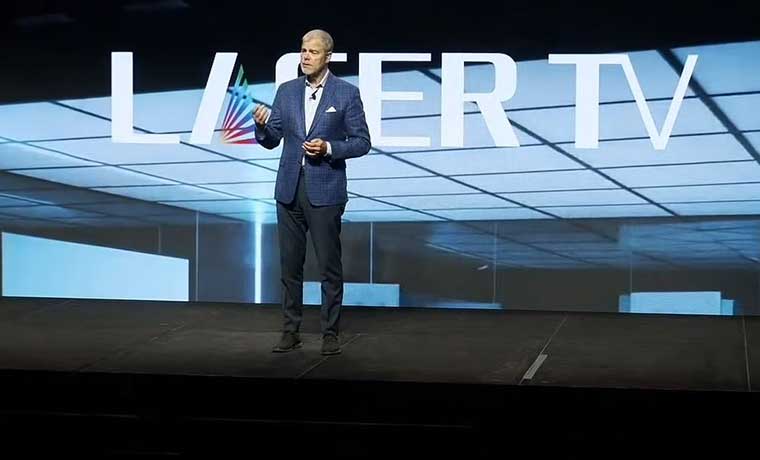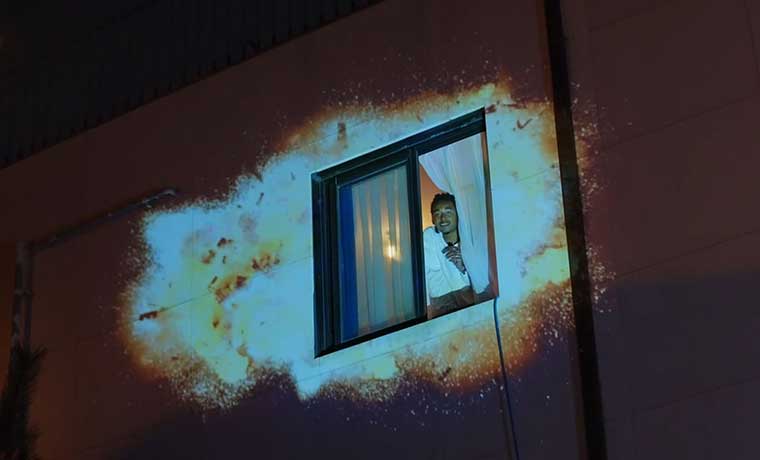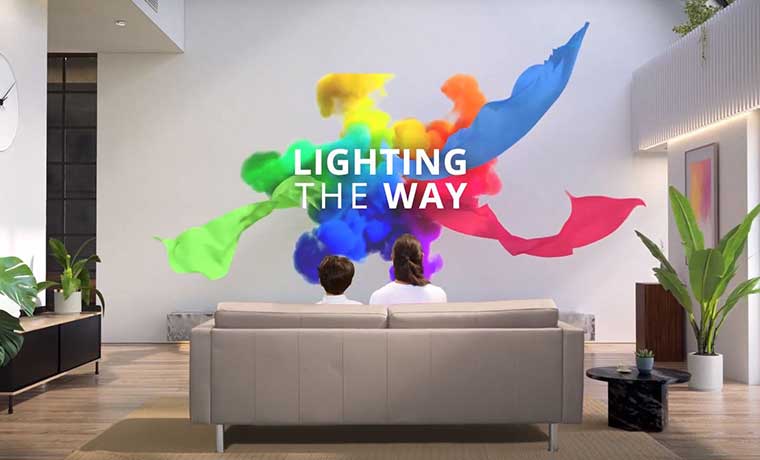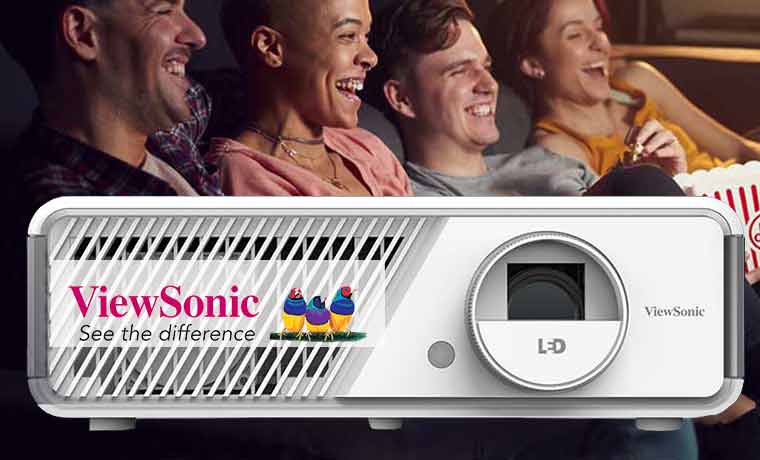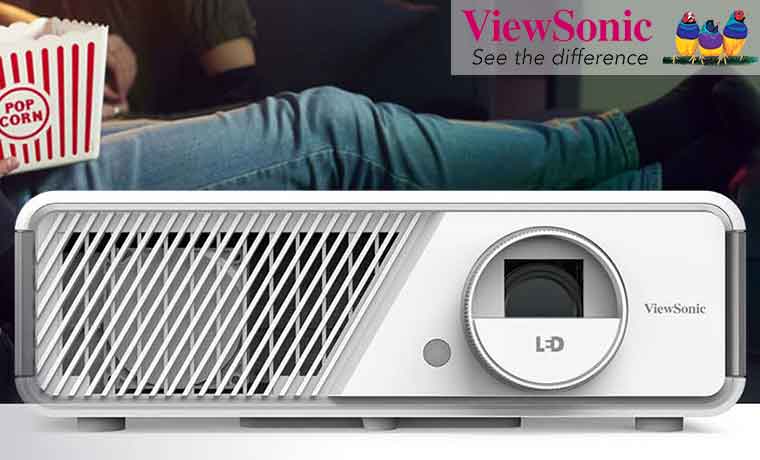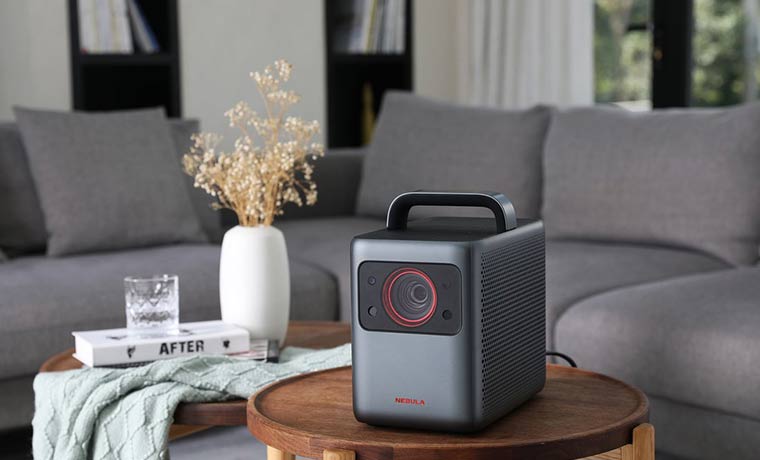In the images below we show both projectors as received, and below that, side views showing the attachment of the two projectors to each other via the stacking brackets.
Once, the projector system is assembled, the projectors must be aligned to work together. As that has to be considered a setup function that will be covered on this page, rather than under Special Features, or Performance pages.
Let's start our tour of the Epson W16SK 3D dual projector system from the front. Each projector is a small off white cased projector with a 1.2:1 recessed zoom lens mounted off center. The front also features a front IR - infra-red sensor for the remote control, and the exhaust vent. The normal adjustable front foot, in the assembled W16SK is not attached to the projectors, but rather an adjustable screw thread foot is provided that attaches to the lower projector bracket. Two more of the same adjustable feet attach to the rear of the lower bracket for adjusting the height of the rear of the projector stack. As you would expect, a 3 point system provides excellent stability and easy adjustment.
Of course the W16SK system can be ceiling mounted (inverted as is normal).
We might as well label the two W16 projectors that comprise the system. The lower projector which sits about six inches closer to the screen is called the Receiver projector, while the upper projector (mounted about 6 inches further back), is referred to as the Commander. (Hey those are Epson terms, not mine -art)
Moving from the front of our projectors to the top, you will first see the recessed zoom and focus controls for the lens. There are two square buttons right behind that area, one is labeled Screen Fit, and is integral to aligning the two projectors digitally so that you get a sharp image on the screen. The other, cleverly is Focus Help!
Also located on the top, toward the back center is a full control panel, and on the top, in the right rear corner (looking from the back) is the access door for replacing the lamp. As you can see in the image to the right, you can swing the lower projector (Commander) out of the way to access the lamp door of the top projector (Receiver), and replace a lamp. That keeps things simple, and makes changing either lamp reasonably easy.
All of the inputs and connectors for these two projectors are located on the back "input" panel. Also of note is that each projector has a hinged door on the left side (looking from the back), which covers the filter. The W16SK may be two projectors but it does come with a single remote control, that controls both simultaneously.
The W16 projectors each have a single HDMI 1.4 input, two USB ports (A and B types), Composite Video, S-Video and a pair of RCA jacks for stereo. There are two analog computer inputs (HD15), but one can be changed to be a Monitor out, a very nice touch. In this day and age that's probably all the analog computer combinations most small projectors need, especially with other sources like HDMI becoming more dominant. There is an RS232 for old fashioned command and control. Lastly there is an audio output for adding additional sound capability such as an external powered speaker system.
1. Remove both projectors and accessories from the box. Both have brackets premounted to them. The projector that has the bracket that sticks out past the front (with a single screw hole) is the lower, or Receiver projector. 2. Set both projectors down, upside down, on a surface that won't scratch them. Remove the two Polarized filters from the accessory box. One is labeled #1, the other #2. Attach #1 to the front of the lens on the Receiver projector. (The screw is taped inside the filter.) Attach #2 to the front of the Commander projector. 3. Insert the three provided black screw threaded feet into the appropriate holes in the Receiver's bracket. Then turn the projectors right side up on your work table. 4. Check the placement chart on page 18 of the manual. It will tell you which of four (labeled 1 through 4) alignment screw holes on the sides of the Receiver bracket is the correct one for the screen size you are using. As I was planning to project to a 100" diagonal 16:9 screen, the chart said use #4. 5. Attach the upper projector's bracket to the lower's and just slightly tighten the two thumbscrews (one on each side. Then using the other thumbscrews place the one on each side into the #4 hole (assuming your screen is the size of mine). That will get you the right angling of the upper - Commander - projector. Tighten the rear thumbscrews. 6. Attach the provided USB cable between the Commander and the Receiver, as shown in the manual. Now all you need to do is plug in HDMI cables (if that's what you are using) to both projectors from your source, also plug in your power cord, and you are ready to power up the projectors. 7. Power them both up, by pressing the power button on the upper (Commander) projector. Both will fire up, with a bright image on the screen in less than 30 seconds. 8. Align the projectors - this is done by using Epson's Keystone correction and Corner correction adjustments. The first thing you do would be to set the zoom of the Receiver projector to just fill your screen. To do that properly, press down and hold that Screen Fit button behind the lens zoom control. 9. You will get a pair of lines - a white rectangle (or trapazoid) from the Receiver, and a Green one for the Commander. The White line needs to all fall inside or on the green line, but again, the white line should just match the outer edge of the screen surface. It's not likely to be rectangular, so use the keystone correction to get a perfect rectangle. 10. Switch to the green line (menu), make sure that the top is above the top of the white line. Use the Corner adjust feature (from the menu), to get the green line to match up perfectly with the white line. It has you align all four corners to accomplish this, one step at a time. 11. Exit the Screen Fit menu, and you should have a very nicely aligned pair of projectors that still look rather sharp, with 2D images and menus looking nice and clean. 12. That's it, the projectors are aligned. To make sure, feed the system some supported 3D content, perhaps a movie on Blu-ray 3D as I did. Place the one pair of provided passive glasses on your face, and if you remembered to use a 3D screen, you should be viewing nicely aligned 3D as well. The whole process of unboxing, getting organized, and performing the assembly and alignments as described should take 10 to 20 minutes. If you are an IT/AV/Tech type responsible for ultimately assembling and installing multiple W16SK projector systems, then I would venture to guess than after the first one, all the others will take you less than 10 minutes from unboxing until ready to use. Perhaps I should clarify: "10 minutes until ready to ceiling mount or place on a table for viewing!" Note please. I would recommend for ceiling mounting, that you test the projectors for good alignment at the same distance from the screen that your ceiling mount would deliver, before mounting.

